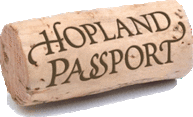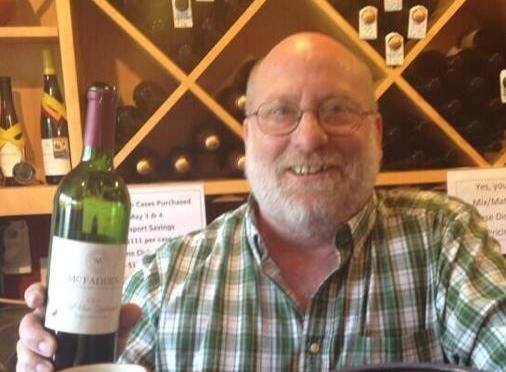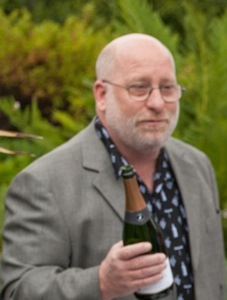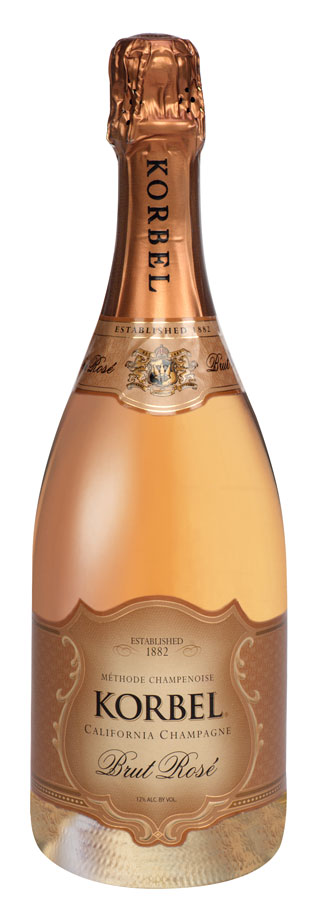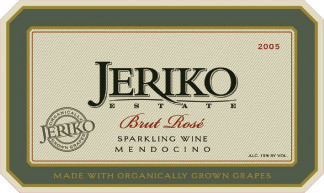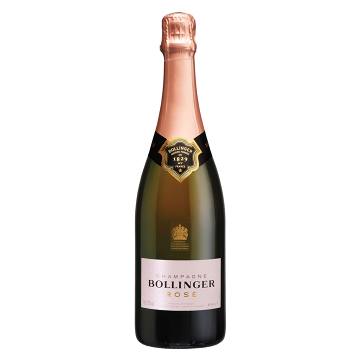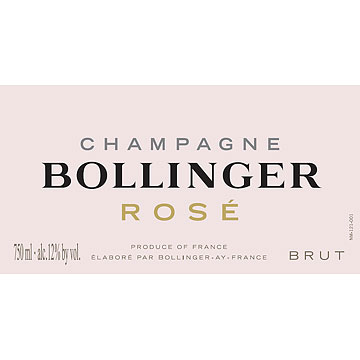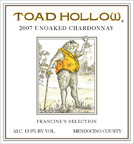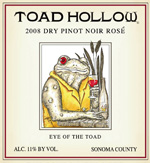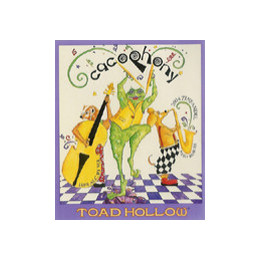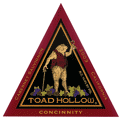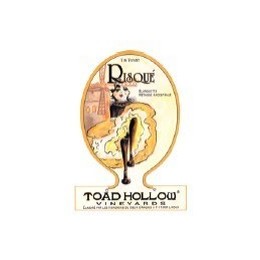Some movies are shot with more than one ending so that only the director knows the real ending, helping to thwart those who seem intent on spoiling the plot, twists, and ending of the movie. Often, these alternate movie endings end up on the movie’s DVD release.
 The stones collected from the vineyards are put to good use at Sonoma-Cutrer
The stones collected from the vineyards are put to good use at Sonoma-Cutrer
In writing about yesterday’s visit to Sonoma-Cutrer Vineyards, I was torn between three introductions. I have decided to present all three introductions as a bonus formatted recap and review piece. Enjoy!
Intro 1) I am a red wine lover, but don’t have anything against Chardonnay. That said, many years ago, my understanding of what Chardonnay could be was changed when I tasted a 1994 Sonoma Coast Kistler Chardonnay. I wondered how it was possible to fit 1.5 liters of flavor into a 750 milliliter bottle, without the wine being overblown, while actually being elegant. How can one winery make Chardonnay that tastes so much better than most other offerings?
Intro 2) I am lucky to be invited to many wine tastings and events, and to receive many sample wine shipments to consider for review. I would love to write about inexpensive wines that taste great with food and are easily available, but too often I taste wines of very limited quantity and very big price tag; the wines taste great, but I really wonder if writing about these wines has any real value to anyone.
The wines I tasted at Sonoma-Cutrer, without having looked at prices, tasted like more uber expensive wines – they tasted great. Seeing how much handcrafting went into every bottle reinforced my expectation that the prices had climbed into the stratosphere in the years since I tasted Sonoma-Cutrer Chardonnay for the first time. What a treat to find the wines poured cost a fraction of what I expected. I hope a number of my readers have the opportunity to taste today’s reviewed wines.
Intro 3) In the late 80’s, younger, much better looking, and very single, I dated often. Grab some French bread, salami, cheese and a bottle of wine and head to the coast, or a quick run to the store for a pasta with wine at home. Wine was always part of a date day or date night. I managed a local restaurant and put together the wine list, and my “go-to” white wine was my favorite from our wine list, Sonoma-Cutrer Chardonnay.
Almost three weeks ago, the invitation came; Maggie Peak, princess of PR for the California wine and Champagne brands of Brown-Forman, kindly invited me to tour the home vineyard of Sonoma-Cutrer, preview the new tasting room, and share in a lunch with Sonoma-Cutrer’s winemaking team. The quickness of my affirmative reply nearly broke the internets.
I set the address of Sonoma-Cutrer, 4401 Slusser Road, Windsor, CA 95492, into my phone, using Google maps, and asked for directions. Google maps tries to direct visitors to a point about 3/4ths of a mile north of the winery, up Slusser Road. Be warned, and adjust as necessary.
 4401 Slusser Road in Windsor (Kind of, sorta)
4401 Slusser Road in Windsor (Kind of, sorta)
Arriving 40 minutes early, I took a few pictures of the winery. From the road, beautiful flowers are maintained by gardeners, a broad lane leads you to the vineyards and winery, runway lighting (parallel to the nearby airport runways) flank the final winery drive, and vast lawns perfect for practicing golf pitches lead to a pair of remarkable croquet fields.
 I wanted to pull out my pitching wedge and get some practice in
I wanted to pull out my pitching wedge and get some practice in
Beyond the parking lot for guests a lovely shaded picnic spot and lake afford visitors additional serenely beautiful views.
 Shady picnic spot
Shady picnic spot
 A “Green” lake, where water is reclaimed and reused
A “Green” lake, where water is reclaimed and reused
The winery grounds feature an enormous number of stones, bordering roads, surrounding greens, and making up walls.
 Shall we put in 20 Bocce courts or 2 Croquet fields?
Shall we put in 20 Bocce courts or 2 Croquet fields?
The winery itself enjoys interesting architectural elements, angles, colors, and doorway shapes that echo the brand’s label design elements.
 The door openings have the signature Sonoma-Cutrer label shape
The door openings have the signature Sonoma-Cutrer label shape
I was thrilled to be met by Maggie Peak, who flew out from Louisville, KY with Brittnay Gilbert. As I took in my first views of the tasting room, we chatted comfortably about what was becoming a beautiful day, cooler than Ukiah where I came from, and much warmer than San Francisco where Brittnay, unprepared, nearly froze to death during Summer.
 The tasting room is rich, but the real beauty is inside the glass
The tasting room is rich, but the real beauty is inside the glass
Soon, we were joined by Winemaking Director Mick Schroeter, Assistant Winemaker – Pinot Noir Michelle McClendon, Tour and Hospitality Host Supreme Michelle Wing, and Wine Journalist/Sommelier Christopher Sawyer. Leaving behind empty glasses begging to convey wine from bottle to mouth, we left the winery for a vineyard tour.
Aboard a giant golf cart, Michelle Wing drove Mick, Michelle, Christopher and I all over the home vineyard, known simply as Cutrer. Originally founded by Brice Cutrer Jones in the 1970’s, the rolling hills of the first vineyards were ignored and only the flat vineyard land was planted – to Cabernet Sauvignon. The result was a typically vegetative Russian River Valley Cab. Jones went to UC Davis, learned, and came back to plant Chardonnay and Pinot Noir. At first, Jones sold the grapes grown, then began to make wines with his grapes. The first Chardonnay vintage was 1981, and the first Pinot Noir vintage was 2002.
 Burgundian row spacing at 4 feet
Burgundian row spacing at 4 feet
Sonoma-Cutrer tries to be Grand Cru-esque, marrying the best vineyard and winery practices of Burgundy and California to produce the best hand crafted wines possible.
 Morning side of the rows, leafed, grape bunches on display
Morning side of the rows, leafed, grape bunches on display
The blend of Burgundy and California is visually evident with the row spacing, combining 4 foot rows (the European norm) that require walking for every vine need and 8 foot rows that allow a vehicle to squeeze between the rows.
 American 8 foot row spacing alternating with 4 foot rows
American 8 foot row spacing alternating with 4 foot rows
The vineyards looked vigorous, and leafing had taken place on the morning side of vines while the afternoon side was unleafed allowing some protection from the longer, hotter effects of the sun. This year, there is uneven grape set, looser clusters in the vineyard, but that is allowing greater airflow this cooler, wetter year and naturally fighting possible mold.
 Except in Arizona, where work is done by magic, French food and French style wine is helped by Mexican Americans
Except in Arizona, where work is done by magic, French food and French style wine is helped by Mexican Americans
Some vines are drip watered on demand, as need is determined by probes in the ground rather than arbitrary clocks and calendars, while the flat and fertile land is dry farmed.
Mick is from Australia and given to entertaining phrases that British and Australians use, but Americans don’t, “Chalk and Cheese,” as an example to suggest unlike things, and Austalian viticultural terms like “Hen and Chicken” to describe big and little grapes in the same bunch. Mick worked at Geyser Peak for 17 years before coming to Sonoma-Cutrer.
Mick pointed out Hen and Chicken grape bunches, and Michelle McClendon held her hand under a bunch while patting the top of the bunch. I asked her what she was doing and Michelle showed me tiny wasted dried up flower bits that fell into her hand, representing grapes that did not form due to shatter owing to sudden temperature fluctuations, rains, or winds.
 Michelle McClendon checking for shatter
Michelle McClendon checking for shatter
The Cutrer home vineyard has soil made from ancient seabeds, clumps of fused rock, shell, and sand. Other Sonoma-Cutrer vineyards are Kent, Shiloh, Owsley, Vine Hill, and Les Pierres, each with a different set of soil and geographic uniqueness. Vine Hill has very sandy soil, while Les Pierres offers up a host of large rocks in the Earth.
Michelle McClendon’s Pinot Noir winemaking takes place in out buildings among the vineyards, away from the main – Chardonnay – winery; a small winery within a winery, built on the same philosophy that makes Sonoma-Cutrer Chardonnay stand out, a dedication to marrying the best vineyard and winemaking practices of Burgundy and California. Creating a Grand Crufornia.
The main cellar was created when a natural hill was excavated, the cellar built, and then the Earth was returned atop the cellar 6-15 feet deep. The result is a naturally cool, and humid environment.
 The chilling tunnel, where at Sonoma-Cutrer, it is cool to be a grape
The chilling tunnel, where at Sonoma-Cutrer, it is cool to be a grape
The treatment of the grapes destined for the bottle impressed me at every turn. After the grapes are hand picked from the vine, they are put in smaller than ordinary bins and sent on a 45 minute ride through a blast chilling tunnel that lowers the grape temperature 20°. Grapes then make their way to sorting tables, where hand sorting assures only the best grapes move forward. The hand picked, chilled, hand sorted grapes then move on to be pressed in top of the line Bucher presses that gently press the grapes allowing a clearer, more similar to free run, juice than other presses. The juice then moves from the press to tanks, and from the tanks to barrels.
 The sorting tables, where all grapes are hand sorted before press
The sorting tables, where all grapes are hand sorted before press
The barrel rooms were marvels of organization, and I am told that new folks to the winemaking team are asked about experience with Excel (Can you create a functional pivot table?). The racking is just 3 barrels high with a large amount of room between for breathing, allowing for a much more consistent heat transfer than many other barrel jammed spaced cellars afford.
 One of the numerous barrel rooms
One of the numerous barrel rooms
Once the barrels are filled, everything is done with the barrels in place. There are over 200 batches of Chardonnay, identified by vineyard and block, in the barrels, some new, others used once.
The barrels are almost entirely French, although Sonoma-Cutrer experiments with American and Hungarian oak. All of the wood is seasoned and aged, by a stave mill and coopers, over 3 years. Sonoma-Cutrer utilizes Rousseau and Remond, two Burgundy coopers.
All Chardonnays sit in barrel 6-8 months before bottling, but two of the Chardonnays, The Cutrer and Les Pierres, are blended and barreled another 7-8 months. The goal of the blending and additional aging is to achieve a wine of distinctive Terroir.
Along the way, these babied wines are cold stabilized to precipitate and remove excess tartaric crystals from the wine.
Mick removed some future wines, 2009 vintage, from barrels with a glass wine thief, and we barrel sampled the Les Pierres and The Cutrer. The Les Pierres showed zesty mineral, lemon-lime, wet pebble, great fruit, light oak, with a lean tightness. With none of this wine seeing new oak, greater subtlety can be showcased. The wine was delicious, lean, and elegant.
The Cutrer barrel sample showed greater oak due to a portion of the wine being held in new oak, was more full and round, more ripe fruit, less tart. Bigger, rounder, creamier.
These 2009s are due out of the barrel and into a bottle early next year.
I have never experienced this level of care and craft in making wine, from vineyard to bottle. I was impressed, and know how some wines taste special – they are, thanks to a lot of work.
We passed the wine lab, where we were asked to refrain from knocking on the glass or offering food to the workers. Mick brought out an amazing rock from the home vineyard chock full of shell fossils.
Our tour ended where it began, as we returned to the new tasting room. We were joined by Terry Adams, Sonoma-Cutrer’s retiring winemaker of 29 years. A table was set for eight, each place with 4 Chardonnay glasses and 1 Pinot Noir glass.
 Terry Adams, Christopher Sawyer, Brittnay Gilbert, Michelle McClendon, Michelle Wing, Mick Schroeter, Maggie Peak
Terry Adams, Christopher Sawyer, Brittnay Gilbert, Michelle McClendon, Michelle Wing, Mick Schroeter, Maggie Peak
Sonoma-Cutrer plans to offer three seated tastings each day, at 10:00 am, noon, and 3:00 pm for $10 per person, with a limit of 20 total persons per tasting. Additionally, 8 people can take part in the golf cart vineyard and walking winery tour. Tours are at 10:30 am and 1:30 pm. Tour and tasting together is $25 per person. The tasting or tour and tasting fee will be credited toward any wine purchase you make.
Saturday, July 10, 2010, Sonoma-Cutrer will be opening the doors to the public for the Grand Opening/Open House, but RSVPs are required. If you live within driving distance of the winery, and many of my readers do live within 15 minutes of the winery, pick up your phone and call (707) 528-1181 right now for details. In addition to unbelievable wines, there will be live music, food and wine pairings, and croquet play.
If you miss the big grand opening celebration, the winery will be open for tastings and tours by appointment, same phone number above, Thursday through Monday (closed Tuesday and Wednesday).
The Tasting (prices may reflect wine club membership discount):
2008 Sonoma-Cutrer Sonoma Coast, Estate Bottled, Sonoma Coast Chardonnay, $21 – Stylistically in the same vein as The Cutrer, but with a larger intended retail presence. 3rd vintage produced. Lovely, rich, big and round. Delicious baked apple pie kind of sweet apple, butter, oak, nice acidity, lots of fruit, well balanced. This may be the least expensive wine, but nothing is held back; I love it.
2008 Sonoma-Cutrer Russian River Ranches, Estate Bottled, Sonoma Coast Chardonnay $23 – 8-15% of the vintage’s grapes were lost to frost damage, the remaining grapes got the extra nourishment their lost cluster-mates would have received, the result: flavor. A more elegant, refined style. Buttery smooth, light acidic zing reinforced by lemon lime and tropical fruit. Gravenstein apple. Lean, crisp, yet round.
2006 The Cutrer, Sonoma-Cutrer, Estate Bottled, Russian River Valley Chardonnay $35 – Much smaller release, single vineyard, home ranch, best blocks and barrels. Holy elegant Batman! Creamy round honeyed oaken apple, lemon, lime and baking spice. Shudder.
2006 Les Pierres, Sonoma-Cutrer, Estate Bottled, Sonoma Coast Chardonnay $32 – Wow. Minerality. Notably Burgundian in style. Complex, bright, clean, subtle, tarter style Granny Smith apple, lemon, light cream, light oak. Elegant.
2007 Sonoma-Cutrer Pinot Noir, Russian River Valley $34 – If the Les Pierres is Wow, then this is Effin’ Wow! Cherry, multi note from dark black cherry to candied cherry, floral, earthen, spicy, licorice and leaf. Delicious.
With lunch, we had some older wines from Sonoma-Cutrer, including the 1994 The Cutrer (only 12 bottles remain), 2001 Les Pierres, and 2005 Sonoma-Cutrer Pinot Noir.
 Three from the vault
Three from the vault
Joining us at lunch was Assistant Winemaker Chardonnay Cara Morrison. Over lunch, Christopher and I explained how we came to write about wine, and far more interestingly, our four winemakers told us how they came to be at Sonoma-Cutrer.
 Background: Two Michelles; foreground: 2007 Pinot Noir, 2005 Pinot Noir, 2001 Les Pierres, 1994 The Cutrer
Background: Two Michelles; foreground: 2007 Pinot Noir, 2005 Pinot Noir, 2001 Les Pierres, 1994 The Cutrer
Lunch was provided by Park Avenue Catering in Cotati.
FIRST COURSE: Romaine & field Greens, Laura Chenel Goat Cheese, Glazed Walnuts, Daikon Sprouts. The salad was dressed with a lemony-creamy dressing that paired so well with the Chardonnays. Brilliant match.
 The salad was a great choice for Chardonnay pairing
The salad was a great choice for Chardonnay pairing
MAIN COURSE: Grilled Pork Tenderloins, Pinot Noir Plum Sauce, Scalloped Potatoes, Grilled Summer Vegetables, French Epi Bread. Pork tenderloin doesn’t have a lot of (any) fat and can be too dry, but that wasn’t the case here. Beautifully prepared, moist and tender pork, with a delicious Pinot plum sauce, almost a glaze. Everything worked, but the Pinot is so big and rich and full of flavor, don’t be shy pairing it with bigger meats like lamb or venison.
 Pork with Pinot sauce goes pretty good with Pinot Noir
Pork with Pinot sauce goes pretty good with Pinot Noir
DESSERT COURSE: Vanilla Panna Cotta, Caramelized Fig Sauce, Chocolate Coupe-with Coffee-Molasses Ganache, and French Press Coffee. The figs were absolutely delicious. The vanilla panna cotta was great. I don’t eat much chocolate, so the intensity of flavor contained in the chocolate coupe was startling, but certainly welcome, the coffee molasses ganache was amazingly delicious. The coffee was fresh and delicious, the perfect end to the perfect lunch.
 Pictured: Vanilla Panna Cotta with Caramel and Fig; in my belly: Chocolate with life altering Ganache
Pictured: Vanilla Panna Cotta with Caramel and Fig; in my belly: Chocolate with life altering Ganache
I tasted and sold a lot of great ’94 Chardonnays, and remember the vintage very well. It was a treat tasting a great wine from the vintage, it made me wonder how others had fared over the years. This 1994 The Cutrer was definitely age effected, but was still showing crisp acidity, citrus zing, and apple fruit. The 2001 Les Pierres was more intact and highlighted the lean Burgundian style noted in the current vintage. The 2005 Sonoma-Cutrer Pinot Noir made me write bad words in my wine notebook, but that is a good thing because I save the big bad words for the very best wines. Absolutely delicious.
That’s it, I’m wrung out, I hope you enjoy the recap of the events of the day, and the reviews of the wine, and food, tasted at Sonoma-Cutrer.
 Jovey Becerra (not pictured), captain of the Sonoma-Cutrer croquet team, can give lessons by appointment
Jovey Becerra (not pictured), captain of the Sonoma-Cutrer croquet team, can give lessons by appointment
Here is what I would do if I were you: Call Sonoma-Cutrer, (707) 528-1181, make an appointment for you and your friends to both tour and taste at Sonoma-Cutrer, just $25 per person for the best vineyard and winery tour I have ever experienced, plus a seated tasting of wines that taste like they should cost $60-125, and then buy a bottle or two and the $25 you spent will go toward your wine purchase (you may find yourself buying a mixed case, or joining the wine club to get a discount). Sonoma County beautiful, and after decades of not being open to the public, Sonoma-Cutrer has put together a hospitality program worthy of their wines.
39.150171
-123.207783






